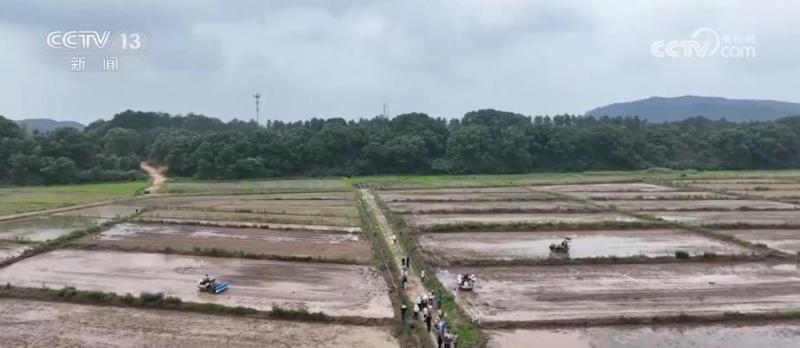Why measure the height of a giant tree?, 101.2 meter community of the tallest tree in Asia | Giant Tree | Asia
What does it feel like standing on a giant tree that reaches a height of 100 meters? From June 7 to June 23, 2023, the Chinese Giant Tree Research Team, composed of the Institute of Botany of the Chinese Academy of Sciences, Fujian Agriculture and Forestry University and other units, entered Yigong Township, Bomi County, Linzhi City, Xizang, and successfully completed the comprehensive scientific research of the cypress giant tree community in southern Tibet.
Wang Zi, a doctor of the Institute of Botany of the Chinese Academy of Sciences and an associate professor of Fujian Agriculture and Forestry University, was one of the members of the scientific research team. In this scientific research activity, he climbed to the place where the tree is 90 meters high and sampled the giant trees and various plants growing on the tree body.
In an interview with West China Urban Daily and Cover News reporters, Wang Zi described the feeling of standing on a giant tree: "This tree feels higher subjectively than measured in reality. It is overall majestic, beautiful in shape, and grows on a slope, making people feel that it is close to 200 meters tall."
The Tibetan cypress discovered this time has a living height of 101.2 meters, equivalent to 36 floors, breaking the record for the tallest tree in Asia, second only to the world's tallest tree species, the North American redwood, which is 116.1 meters tall. According to Wang Zi, the scientific research team also plans to conduct investigations in unmanned areas and may discover taller trees.
Asia's tallest tree found in Xizang
"I searched for around 300 to 500 giant trees before discovering this 101.2 meter tall Tibetan cypress," said Wang Zi.
In this survey, the scientific expedition team found that the giant tree community in this area has a rich height hierarchy. There are more than 260 trees over 80 meters, 25 trees over 90 meters, and the highest one is the Tibetan cypress I, with a living height of 101.2 meters, equivalent to 36 floors, breaking the record for the tallest tree in Asia, second only to the 116.1 meters recorded by the world's tallest tree species, the North American redwood.
The team intercepted the annual rings of Tibetan cypress trees that collapsed due to natural death in the surrounding area, and inferred that the age of Tibetan cypress tree I is about 1450 years old, while the age of another Tibetan cypress tree II is about 1400 years old. Wang Zi believes that based on the information of landforms and vegetation, there is still a possibility of taller trees in this area.
"Actually, I wasn't particularly excited after the measurement because we only conducted a phase of work this time and plan to conduct surveys in uninhabited areas in the future. It's very likely that we will discover even taller trees. Although I'm quite happy about this discovery, I still need to work harder." Wang Zi said, "But the geothermal resources near there are good, there is a great hot spring next to the Grand Canyon, and the sound of water is very loud. After the survey, I went to soak in that natural hot spring for a while, which is a reward for myself."
Wang Zi introduced that the reason why he hoped to discover taller giant trees was mainly based on the distribution of species, because currently the scientific research team is mainly investigating the peripheral areas of the community. The team also plans to conduct further investigations this winter, and may discover taller trees. The approximate species should still be Bhutan pine and Tibetan cypress.
How to measure the height of a giant tree?
Wang Zi mentioned that measuring the height of a giant tree mainly measures the distance between the base point of the tree stump and the high point of the tree tip. For trees growing on mountain slopes, tree stumps are usually naturally inclined and even extend outward to support roots, with a height difference of up to 3 to 4 meters between the top and bottom of the stump. The current general standard is to exclude the supporting roots, measure the highest and lowest base points of the tree stump, calculate the height difference between the highest point of the active part of the tree top and these two base points, and then take the average value.
In addition, if a tree grows obliquely, we usually do not measure its natural length, but rather measure its projected height. There are currently four main methods for measuring the height of giant trees: visual triangulation, laser ranging, laser scanning, drone rope measurement, and rope climbing measurement.
The method used for this giant tree test is the rope climbing method. Based on preliminary analysis, the scientific research team ultimately chose the internationally commonly used single rope technique, where people climbed to the top of the tree, then directly lowered the tape measure and lowered it to the ground to measure the height of the tree. This way, no artificial marks can be left on the tree body, and no permanent damage can be caused to the tree body, achieving "seamless climbing".
The actual measurement method of climbing rope involves using a giant slingshot to throw the bean rope to a certain height on the side branch, using the bean rope for traction. Then, the tree climber climbs up and throws the bean rope step by step. Finally, the main rope is pulled to the top of the tree to measure the vertex. In this way, subsequent climbers can climb the main rope to the treetops. In the middle of the main rope, one to several safety points will also be set up to secure the climbers.
After climbing the treetops, the next step was to measure the height of the giant tree. The tree climber first climbs to a distance of two to three meters from the tree top, extends a fishing rod to the tree top, notes the corresponding position between the tree top and the fishing rod, and then measures the length of the rod. Adding it to the length measured by a single rope can determine the height of the giant tree.
Giant trees witness changes in climate temperature
Since the establishment of Giant Cedar National Park in 1890, humans have been exploring the discovery and research of giant trees. Over 100 years have passed, and human research on giant trees has developed a very comprehensive system. So searching for giant trees in the vast forest is time-consuming, labor-intensive, and costly, just to break the "highest record" and experience the thrill of climbing?
The giant tree system is undoubtedly the core of the scientific research and exploration of primitive forests, and the canopy layer is the focus of giant tree research. Wang Zi stated that giant trees are a very precious natural heritage on Earth, preserving important climate and environmental information. Each giant tree is a unique "sky garden". On the one hand, giant trees are indicators of forest health, and their existence indicates that the forest is sufficiently intact and primitive. Therefore, studying and protecting giant trees is also studying and protecting the entire forest. A healthy forest community should not be as neat and flat as artificial forests, but should have a staggered vegetation layer structure.
Furthermore, a giant tree several tens of meters tall often has dozens of plant species attached or parasitized to it, forming a unique ecological community. At different heights, plant species can also experience vertical changes similar to those in mountainous areas due to changes in temperature and moisture. In the past, researchers could only study plant changes in different climate zones on a horizontal scale or at different altitudes in mountainous areas. Nowadays, on a giant tree that spans several tens of meters, you can conduct research across climate zones. Understanding the environmental diversity, heterogeneity, and vertical changes in vegetation on giant trees can solve many unknown puzzles.
Not only that, the giant tree also leaves a mark on the environment and climate change. Most giant trees are several hundred years old, and some species even reach thousands of years old. Throughout their long lives, they have witnessed changes in climate, abundance and scarcity of precipitation, all of which leave traces on trees. Based on the imprints on the giant tree, we can infer its historical environment and use it as a reference to speculate on the future trend of climate change.
According to Gong Bu, member of the Chinese Giant Tree Research Team and director of the Forestry and Grassland Bureau of Bomi County, Nyingchi City, Xizang, the next step is to take measures from three aspects to protect the giant cypress community in southern Tibet. One is to assign "ID cards" to the giant tree communities, conduct careful investigation, statistics, registration, and archiving of the Tibetan cypress giant trees in the region, and establish and improve a database of giant tree communities; Secondly, establish a "safety net" for the giant tree community and promptly include it in the assessment scope of the forest tenure system; The third is to weave a "protective umbrella" for the giant tree community, further strengthen science popularization, and jointly form a social force to protect this precious giant tree forest.
How were photos of giant trees and others taken?
The concept of "isomorphic photos" of giant trees originates from the use of high-definition images to record them, and the implementation of "isomorphic" production with actual giant trees in existing output technology. The immovable giant trees are presented relatively clearly and realistically to the audience, in order to achieve the comparison and experience of characters and trees in proportion.
With the application of drone technology, the "Wild China" studio led by renowned Chinese wildlife photographer Xi Zhinong has attempted to use drone vertical lifting to capture images, combined with hundreds of post production photo synthesis processing, to solve the problem of previous orbit system photography. Previously, it used to take a team of tens of people and months to complete the shooting. Now, with just one excellent pilot, one drone, and a few batteries, the preliminary shooting can be completed.
According to Liu Gang, the person in charge of 720 Cloud and the photography team of the Chinese Giant Tree Research Team, scientists and tree climbers used a 166mm telephoto lens from a drone to take photos of the tree canopy. The shooting time for each giant tree was about 100 minutes, and three takeoffs and landings were enough to complete the shooting of one giant tree. Approximately 10 shots are taken every 2 meters, with an average of 1500 to 1700 footage taken for each giant tree. The footage is divided into 3 layers, including top, middle, and bottom, to create a composite image that progresses layer by layer. Among them, the shooting accuracy of the Tibetan cypress II giant tree exceeds 5.5 billion pixels, which is currently the highest accuracy for body photos of giant trees and other objects in the world.
However, although there has been a qualitative leap in technology, most giant trees are surrounded by dense canopy, dense vegetation, and high canopy density, combined with light, rainfall, etc., which have brought many difficulties to actual operation. Liu Gang stated that there are high requirements for the control technology of the pilots, and even a slight mistake may cause a collision with a branch and result in a drone crash.
West China Urban Daily - Cover News Reporter Yan Wenwen Intern Journalist Ma Xiaoyu Kou Mengshan



